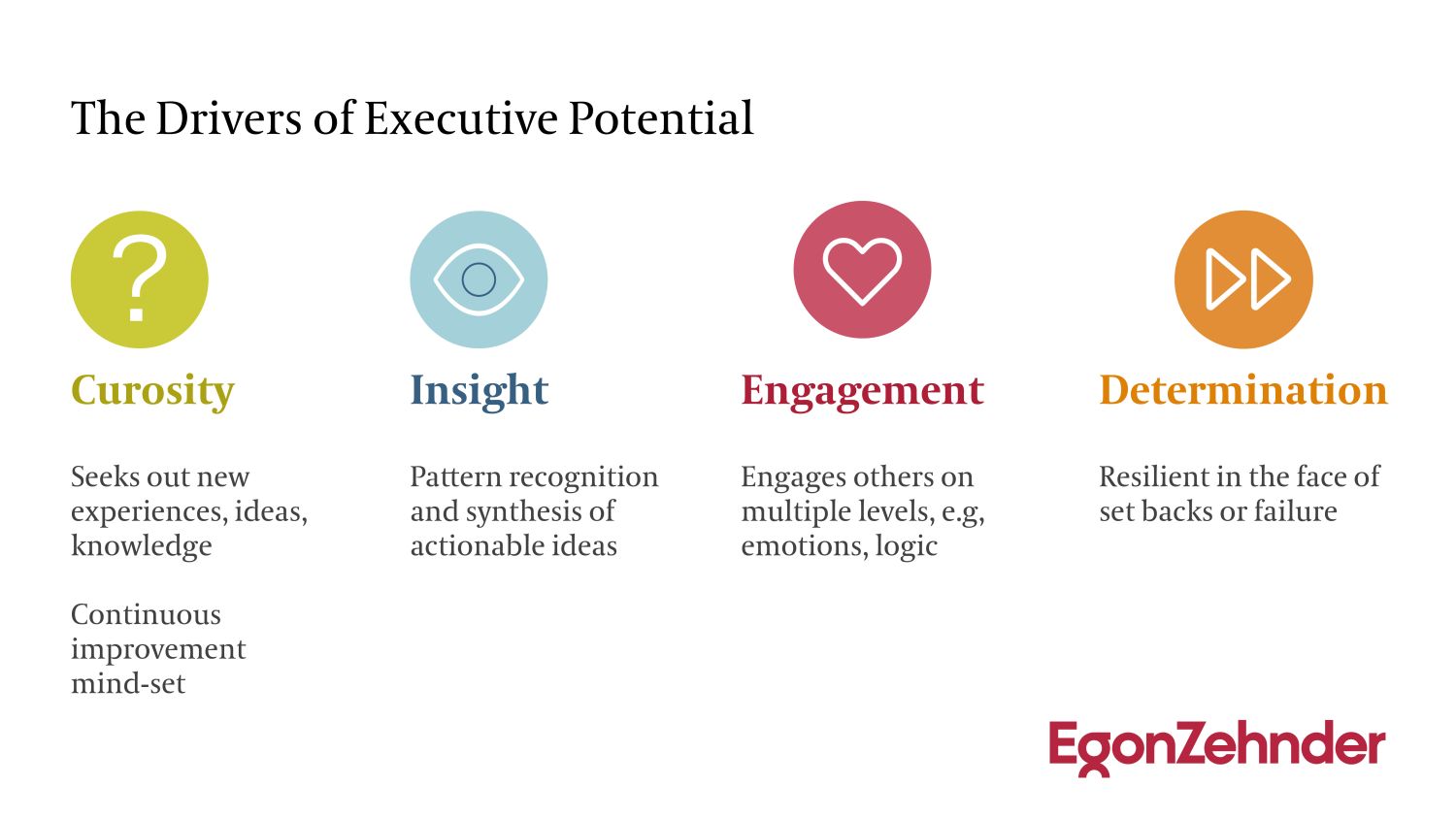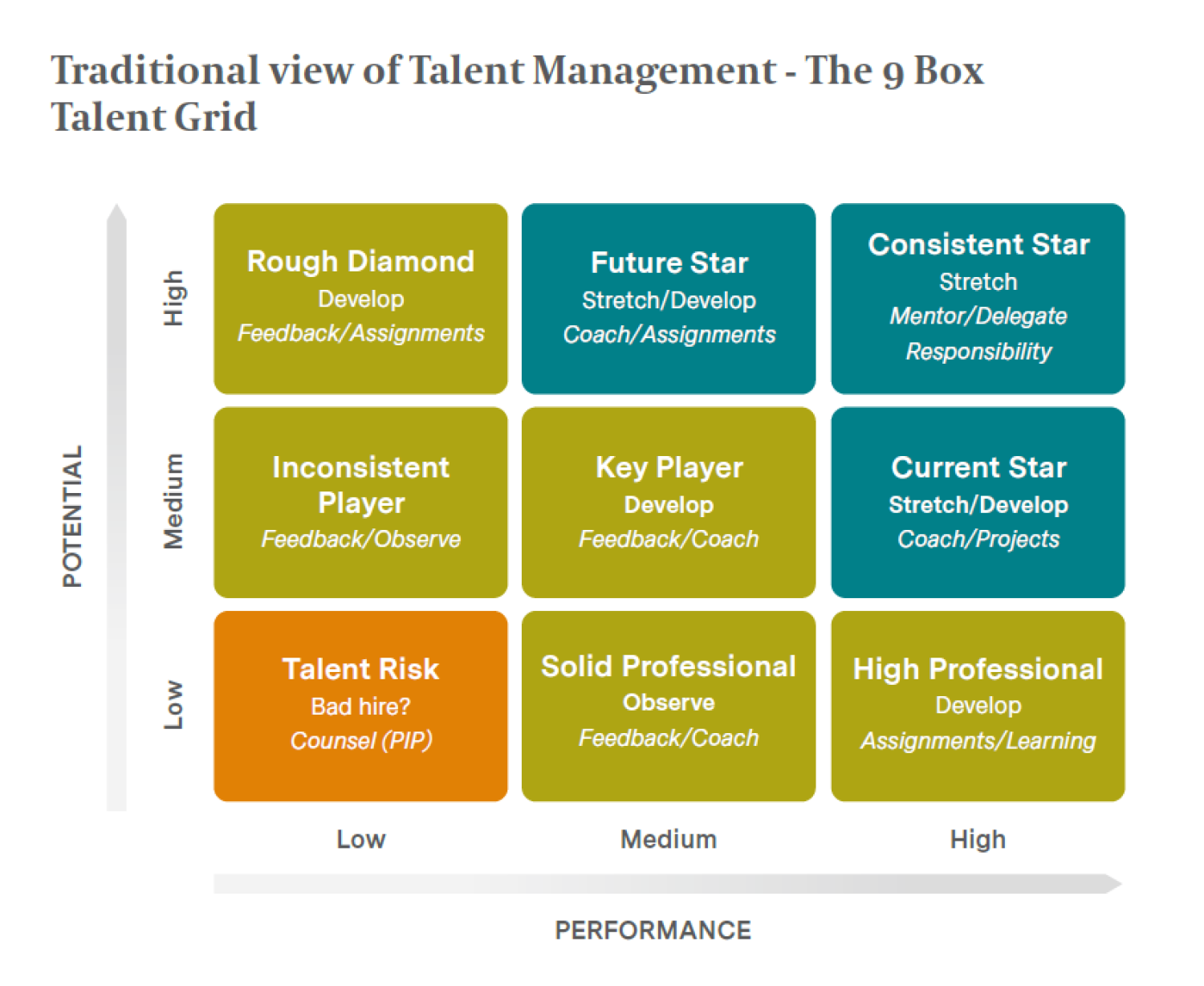The world of work has shifted permanently. Today’s talent leaders face an environment marked by macroeconomic upheavals, demographic changes, and rapid technological advances—creating a landscape that is not just different but highly complex. Thriving in this new era calls for a holistic, forward-looking approach to talent management.
Egon Zehnder recently held roundtable discussions and one-on-one interviews with top talent leaders from some of the largest companies in the world. Our conversations highlighted the complexities of modern talent management—such as the rise artificial intelligence, generational shifts, geopolitical tensions, ESG and DEI responsibilities. To chart a new course through these challenges, they are experimenting with new approaches, methods and models that are helping them to build the workforce of the future.
We set out to uncover these new approaches, and how they are redefining the path forward.
What Is Talent Management?
Talent management encompasses every key decision about people within an organization—from recruitment and onboarding to performance management, development, succession planning, and employee engagement. These decisions fundamental to achieving differentiated performance and achieving outsized returns.
Additionally, embedding better talent management practices into the corporate culture allows organizations to effectively navigate challenges, foster sustainable leadership, and position themselves to capitalize on future opportunities.
Modern Challenges in Talent Management
Talent leaders are encountering a wave of challenges that call for evolution of traditional talent management practices.
At the leadership level, shorter CEO tenures and a growing gap in talent are putting additional pressure on companies. The challenge of finding qualified leaders for senior roles has intensified, with high competition for top talent. Organizations must now focus on not only retaining their current leaders but also on developing a strong pipeline of future executives to navigate the complexities ahead.
The Covid-19 pandemic illuminated another challenge, the struggle with worker “burnout,” which fueled aspects of the Great Resignation and forced talent managers to rethink how to attract people seeking a better work-life balance. A global Egon Zehnder study analyzing the different generations’ expectations of the workplace found that personal well-being, stability, and work-life balance matter more than money to most generations, with 82% of respondents ranking mental well-being as their top concern. Gen Z, in particular, is the least interested in a full-time job among all generations, highlighting the need for talent leaders to be strategic on how they evolve the workplace culture as part of the talent management strategy.
It takes a lot of focus and energy to help these younger workers, who in addition to mental health concerns, also want their employers to instill a sense of purpose and vibrant culture into the workplace. “Employees expect more and more in terms of the social contract between employers and society,” said one leader. Younger employees value social responsibility, which puts pressure on companies to make real progress in ESG, DEI, and similar areas. Geopolitical conflicts add another dimension that talent managers must address: “Whether it’s the pandemic response, Ukraine, or Gaza, any new topic that doesn’t fit neatly anywhere gets added to our remit,” said one.
At the same time, talent leaders must listen to the concerns of employees of all ages; with five generations currently of working age, managing a multi-generational workforce is becoming a premier challenge for leaders trying to update and reform their workplaces.
Another major talent challenge relates to changing views on the workplace. It’s becoming clear that a majority of workers prefer hybrid or remote positions rather than mandatory in-office work. According to a 2024 report by Morning Consult, while 65% of surveyed U.S. employees worked in person, only 46% preferred that arrangement over hybrid or remote work. The same report detailed that as hybrid workers’ “engagement” rose in 2024, it fell for those fully remote or fully in-person. “People want to work from anywhere,” one talent leader told us. “What is the balance to enable the most effective collaboration?”
Innovations in Talent Management
Challenges in talent management are everywhere, but so are the innovations that could help leaders and businesses surmount them.
Artificial Intelligence
Artificial intelligence and its potential to displace traditional knowledge-based jobs, and perhaps entire industries, deserves focus. While this emerging disruption is a clear challenge for leaders in human capital, it also offers a chance to rethink how we approach talent and work through innovation.
Some talent leaders we consulted noted that adopting AI is akin to previous technological progress and doesn't necessarily pose a threat to employment. AI can support workers by providing training and reskilling opportunities to improve their performance. Additionally, it can be beneficial in HR technology, including software for onboarding, performance management, and succession planning. For instance, AI tools are being tested in talent acquisition processes, including initial assessments and scheduling, enabling talent leaders to extend their responsibilities throughout the talent lifecycle.
Of course, this adds much to the long list of responsibilities talent managers must now take on. “All talent leaders need to be technologists to be successful going forward,” one leader said to us. That means learning and leveraging these new AI-driven tools, which—fortunately—can fit neatly amid the overall trend toward skills-based (rather than job-specific) talent management. Technology can help talent managers focus “on the few, not the many,” to drive real impact rather than stretch themselves too thin.
Worker Empowerment
Technology can also be a primary enabler of a stronger learning and development ecosystem for workers. Worker empowerment is driving engagement, and businesses need to give their employees the tools to help advance themselves and their skills. For example, the healthcare company Bupa is offering leadership programs that employees can opt into, with associated tech-focused activities such as hackathons. Similarly, a global company in the consumer industry has established a system that allows employees to set a workplace “journey” that they are excited about and want to embark on to achieve their highest potential.
Such empowerment efforts are especially important amid ongoing retention issues across many industries. “We can't plan their paths 20 years into the future these days because they're gone by five,” said one talent leader. Some firms are even starting to collaborate with educational institutions to help their employees make progress toward their skill goals.
Undoubtedly, the role of Chief Talent Officer is growing in significance as organizations recognize the need for a more strategic approach to talent management. This expanded remit reflects the growing complexities in leadership, development, and employee engagement. A notable example is Walmart, which recently appointed its first Chief Talent Officer, combining talent, leadership, and learning teams into one global function to streamline development and align with organizational goals.
The issue of managing a multi-generational workforce and the new challenges of younger workers has also seen some the rise of “Gen Z Boards,” which leaders consult with on upcoming initiatives and communications to test and shape new ideas. Another example is the public relations firm Dentsu, which has embraced the idea of employees having side hustles as a way to spark creative fulfillment in parallel to their regular job—a pertinent benefit, considering that a recent MarketWatch survey found that 54% of Americans reported having a side hustle, with that number even larger for Gen Z (71%) and millennial (68%) workers.
Assessing for Potential
Identifying and nurturing a strong pipeline of leaders for the challenges ahead is an essential pillar of talent management. To do this well, talent leaders need more than an evaluation of past performance and current skills—they need a future-focused approach. This is where Egon Zehnder’s Potential Model comes into play, offering a progressive framework for assessing and developing talent. The Potential Model focuses on four key traits that predicts future success: Curiosity, Insight, Engagement, Determination.

By assessing how well individuals demonstrate each trait, we can assertively predict their readiness for more complex and influential leadership roles. Since these are innate traits, the potential model allows assessment from individuals who are earlier in their careers—enabling earlier identification of talent—to C-suite executives, creating a more effective method for talent development in the long term.
Boxed in: The Limitations of the 9 Box Grid for Talent Management
For years, one of the most dominant tools in talent management has been the 9 Box Grid. The model separates employees into one of nine groups across two axes: potential and performance. It allows managers to consider how employees are performing at that moment in time, as well as their ability to grow into better performers in higher positions. This has made the 9 Box Grid key for succession planning and aligning employee development goals.

The 9-box grid, developed by McKinsey in the 1970s for GE, was inspired by BCG's growth-share matrix. Originally used to prioritize business investments, it later became a popular HR tool for assessing employee performance and potential.
In our conversations, talent leaders valued the 9 Box Grid for providing a “common language” that can be used across an entire organization, rather than having to reconcile competing metrics from different managers or departments. Yet there was an undeniable sense of fatigue regarding its ubiquitous usage—in the words of one leader, the model is “a tick-the-box exercise, but we cannot do without it.”
Part of this fatigue stems from the subsequent focus on data and numbers, rather than the people behind them. “The farmer spends all their time weighing the beast but very little time fattening it,” said the talent leader of a large tech company. “There’s a bias toward measurement and plotting people, but talent conversations are often lost in the numbers. I would like to be able to instead free up the time to really engage on career planning.”
Some leaders are adopting simpler approaches to assessing talent by categorizing individuals into pillars. In one company, “room for improvement,” “core contributors,” “emerging talent,” and “high potentials” help leaders assess talent. As one leader explained, “The categories are much simpler and definitions easier to calibrate, particularly when you have a lot of front-line people. Simplicity is key and you can look at a couple of slides rather than an in-depth training session.”
The specific, often-changing needs of a business also sometimes get lost in rigid adherence to the 9 Box Model. Talent leaders we spoke with said it’s more important to delineate company KPIs and outcomes first, then work backward to understand who can fill critical roles to accomplish them. This can highlight what skills must be invested in and developed for future success, instead of solely using an employee’s grouping in the model to justify a decision. Said one leader: “If we look at talent like capital and think about how best to deploy capital, we will be better off.”
Looking Toward the Future of Talent Management Best Practices
Talent leaders are integral to the success of businesses, and they need freedom and support from senior leadership and boards to unleash innovation. In addition, they must also be willing to truly experiment—and fail—to find what talent strategies best fit their organizations’ needs. The current moment calls for bold, disruptive action from these leaders. This is beyond slight tweaks to the 9-box model or adding access to meditation or fitness apps as an employee benefit.
Now is the time to start with a blank sheet of paper, asking what the company needs—and will need. Talent leaders must be empowered to break away from past methods and create the conditions for meaningful experimentation. By doing so, they can attract and retain the talent needed to navigate and succeed in an increasingly complex landscape. Forward-looking talent management doesn’t solely offer an operation advantage; it is the critical drive of sustained success.





